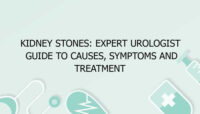Heart disease is a broad term that encompasses a variety of conditions affecting the heart and blood vessels, including coronary artery disease, heart failure, arrhythmias, and valve disorders. Early diagnosis of heart disease is crucial because it can lead to better outcomes through timely treatment and lifestyle modifications. The process of diagnosing heart disease involves a combination of medical history assessment, physical examination, diagnostic tests, and imaging techniques. Understanding how heart disease is diagnosed can help individuals recognize early signs and seek medical attention when necessary. This article will walk through the various steps and methods doctors use to diagnose heart disease and provide useful insights into the diagnostic process.
1. Medical History and Risk Factor Assessment
The first step in diagnosing heart disease typically involves a thorough medical history and assessment of risk factors. During this stage, your doctor will ask you about your symptoms, lifestyle habits, family history of heart disease, and any pre-existing medical conditions such as diabetes, high blood pressure, or high cholesterol.
Risk Factors for Heart Disease: Certain factors can increase your risk of developing heart disease, including:
- Age: Heart disease risk increases with age, especially after 45 for men and 55 for women.
- Family History: A family history of heart disease can raise your likelihood of developing similar conditions.
- Smoking: Smoking damages blood vessels and accelerates the development of atherosclerosis (plaque buildup in arteries).
- Obesity and Poor Diet: Excess weight, especially abdominal fat, and poor dietary habits can contribute to high cholesterol, high blood pressure, and insulin resistance.
- Physical Inactivity: A lack of physical exercise increases the risk of developing cardiovascular problems.
- Chronic Conditions: Conditions like hypertension, high cholesterol, and diabetes are major risk factors for heart disease.
A full medical history helps your doctor evaluate your risk profile and determine whether further diagnostic testing is needed.
2. Physical Examination and Symptoms Evaluation
The physical exam is another crucial part of diagnosing heart disease. During the examination, your doctor will check for physical signs that might suggest heart problems, such as high blood pressure, abnormal heart rhythms, or swelling in the legs or abdomen. The doctor will also listen to your heart with a stethoscope to detect any unusual sounds, such as murmurs, which could indicate heart valve problems.
Common Symptoms of Heart Disease:
- Chest pain or discomfort (angina)
- Shortness of breath during physical activity or while lying down
- Fatigue or unusual tiredness, particularly with exertion
- Swelling in the feet, legs, or abdomen (sign of heart failure)
- Dizziness or fainting spells, which could indicate arrhythmias or poor blood flow
By evaluating symptoms and conducting a physical exam, your doctor can determine if heart disease is a possibility and what type of tests might be necessary.
3. Diagnostic Blood Tests for Heart Disease
Blood tests are often performed to assess risk factors for heart disease, such as cholesterol levels, blood sugar, and inflammation markers. These tests help provide a clearer picture of your cardiovascular health.
- Lipid Profile: A lipid profile is a blood test that measures your levels of total cholesterol, LDL cholesterol (bad cholesterol), HDL cholesterol (good cholesterol), and triglycerides. High LDL levels and low HDL levels are associated with a higher risk of atherosclerosis, a major cause of heart disease.
- Blood Sugar and HbA1c Test: High blood sugar levels and uncontrolled diabetes are risk factors for heart disease. The HbA1c test measures your average blood sugar levels over the past 2-3 months and helps assess your diabetes risk.
- High-Sensitivity C-Reactive Protein (hs-CRP): This test measures levels of C-reactive protein, a marker of inflammation in the body. Elevated hs-CRP levels may indicate an increased risk of heart disease, as inflammation plays a role in the development of plaque in the arteries.
- B-type Natriuretic Peptide (BNP): High BNP levels may indicate heart failure, a condition where the heart is unable to pump blood effectively.
These blood tests help doctors assess factors that could lead to heart disease and determine the next steps for diagnosis or treatment.
4. Imaging Tests to Detect Heart Disease
Imaging tests provide detailed pictures of the heart and blood vessels, helping doctors identify blockages, structural abnormalities, and other cardiovascular issues. Common imaging tests used in diagnosing heart disease include:
- Electrocardiogram (ECG or EKG): This non-invasive test records the electrical activity of the heart. It helps detect abnormal heart rhythms, evidence of a past heart attack, or signs of heart strain.
- Echocardiogram: This ultrasound-based test uses sound waves to create detailed images of the heart’s structure and function. It can assess heart valve function, the pumping ability of the heart, and the presence of fluid around the heart.
- Stress Test: A stress test involves exercising on a treadmill or stationary bike while monitoring your heart’s response. It helps doctors assess how your heart performs under physical stress and can identify blockages in the coronary arteries.
- CT Angiography: This advanced imaging technique uses X-rays to create detailed 3D images of the coronary arteries. It is often used to detect coronary artery disease, including blockages.
- Cardiac MRI: Magnetic resonance imaging (MRI) provides detailed images of the heart and blood vessels. It’s often used to assess heart function and detect damage after a heart attack.
- Coronary Angiogram: This procedure involves injecting a contrast dye into the coronary arteries and taking X-rays to look for blockages or narrowing. It is the gold standard for diagnosing coronary artery disease.
These imaging tests help doctors pinpoint the exact location and severity of heart problems and guide the development of a treatment plan.
5. Other Tests and Procedures for Diagnosing Heart Disease
In addition to blood tests and imaging, several other tests and procedures may be used to diagnose heart disease:
- Holter Monitor: This portable ECG device records your heart’s activity for 24-48 hours, helping detect irregular heart rhythms that may not show up during a routine ECG.
- Cardiac Catheterization: In this procedure, a thin tube (catheter) is inserted into a blood vessel in the arm or groin and threaded to the heart. It allows doctors to measure pressure in the heart chambers, evaluate blood flow, and detect blockages in the coronary arteries.
- Tilt Table Test: This test is used to diagnose causes of unexplained dizziness or fainting, which can sometimes be related to heart rhythm disorders.
- Genetic Testing: In some cases, genetic testing may be done to assess inherited heart conditions, particularly if there is a family history of early heart disease or sudden cardiac death.
By using a combination of these tests, doctors can get a comprehensive understanding of your heart health and determine if you have heart disease.
Table: Common Tests Used to Diagnose Heart Disease
| Test | Purpose |
|---|---|
| Electrocardiogram (ECG) | Detects abnormal heart rhythms and signs of previous heart attacks. |
| Echocardiogram | Assesses heart function, valve issues, and structural abnormalities. |
| Stress Test | Evaluates how the heart performs under physical stress to detect blockages. |
| CT Angiography | Creates detailed 3D images of coronary arteries to detect blockages. |
| Coronary Angiogram | Gold standard for detecting coronary artery disease and blockages. |
Related FAQs About How Heart Disease is Diagnosed
1. How accurate are the tests for diagnosing heart disease?
The accuracy of heart disease tests depends on the type of test and the circumstances. For example, an EKG can effectively detect irregular heart rhythms, but may not always identify underlying coronary artery disease. Stress tests are useful for identifying blockages in coronary arteries, but they may not detect mild blockages or early-stage disease. Imaging tests like CT angiography and coronary angiograms are highly accurate for detecting blockages in the arteries. Overall, a combination of tests, along with a thorough evaluation of risk factors, is typically the best approach for diagnosing heart disease.
2. What are the early signs that may indicate heart disease?
Early signs of heart disease can vary, but some common symptoms include chest pain or discomfort, shortness of breath, fatigue, and dizziness or lightheadedness. In many cases, heart disease develops gradually, and the symptoms may not be severe initially. It is important to monitor these symptoms and consult with a healthcare provider if they persist or worsen. Regular check-ups and screenings, especially if you have risk factors for heart disease, can help detect heart disease before it becomes more serious.
3. Can heart disease be diagnosed without symptoms?
Yes, heart disease can be diagnosed even in the absence of obvious symptoms. Many people with early-stage heart disease do not experience noticeable symptoms until the condition has progressed. This is why routine screening and check-ups are so important, especially for individuals with risk factors such as high blood pressure, high cholesterol, or a family history of heart disease. Tests like lipid profiles, blood pressure checks, and EKGs can detect early signs of heart disease before symptoms develop.
4. What is the role of genetic testing in diagnosing heart disease?
Genetic testing may be used in specific cases where there is a family history of heart disease, sudden cardiac death, or inherited heart conditions like hypertrophic cardiomyopathy or familial hypercholesterolemia. These conditions can predispose individuals to heart disease at an early age. Genetic tests can help identify mutations that increase the risk of cardiovascular problems, allowing for earlier interventions and preventive measures.
5. How can I reduce my risk of heart disease after diagnosis?
If diagnosed with heart disease or at risk for it, there are several lifestyle changes you can make to reduce your risk of complications. These include adopting a heart-healthy diet rich in fruits, vegetables, and whole grains, increasing physical activity, managing stress, quitting smoking, and controlling conditions like high blood pressure, high cholesterol, and diabetes. Your doctor may also recommend medications or other treatments depending on the type and severity of heart disease. Regular monitoring and adherence to treatment plans are key to managing heart disease effectively.


